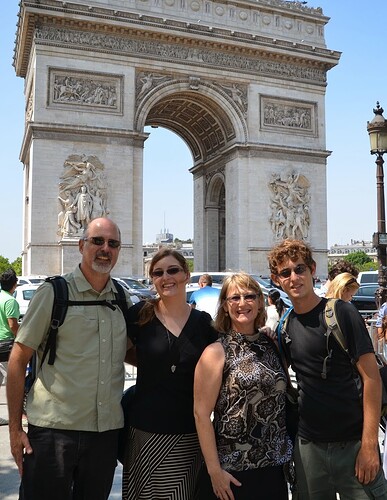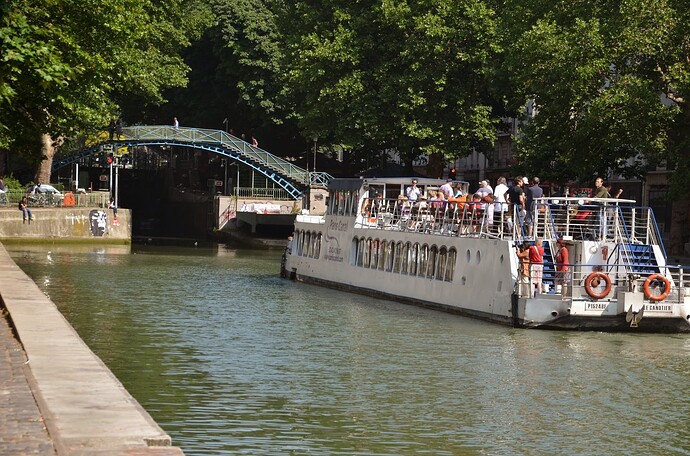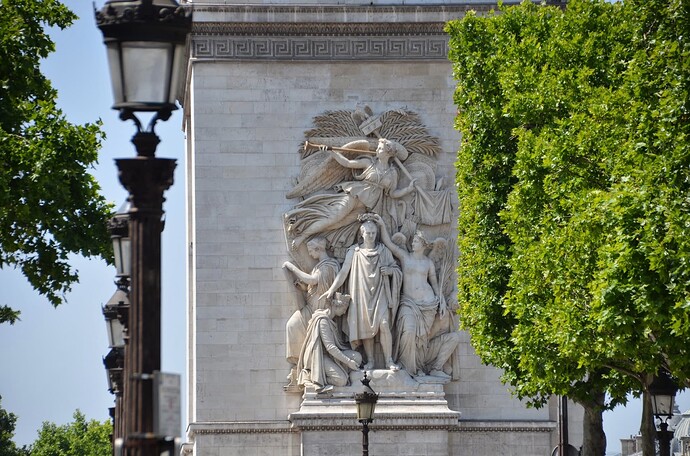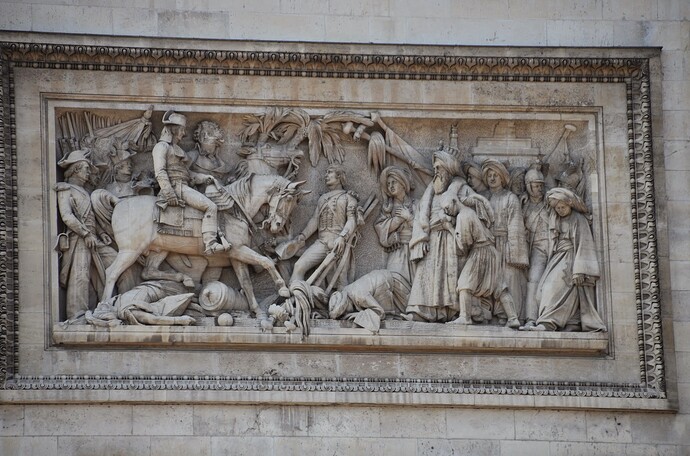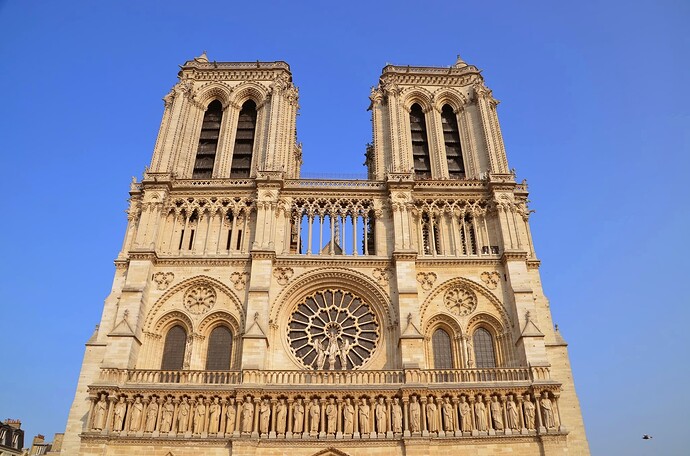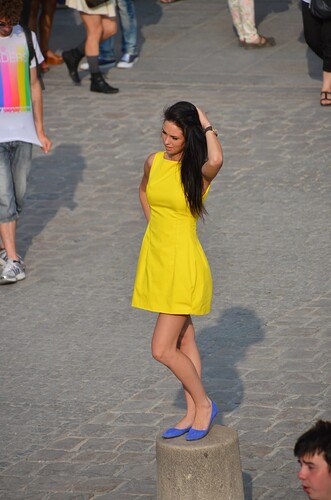-
Inscriptions: The Arc de Triomphe has the names of 128 battles and 558 generals inscribed on its surfaces. These represent significant victories of the French army during the French Revolution and Napoleonic Wars.
-
Tomb of the Unknown Soldier: Beneath the Arc lies the Tomb of the Unknown Soldier from World War I. An eternal flame burns in memory of the dead who were never identified, both from World War I and II.
-
Aerial View: The top of the Arc de Triomphe offers a panoramic view of Paris. Twelve avenues radiate from the monument, forming a star (étoile), which led to its location being named Place de l’Étoile.
Exploring Paris
We enjoyed a leisurely walk along the canal, watching a boat navigate through the locks. While Dad went exploring, the girls picked up pastrami and pastries for lunch. We ate our lunch by the statue in Place de la République.
Next, we took the subway and walked to see the Eiffel Tower, Champs-Élysées, Arc de Triomphe, and countless statues and artistically designed buildings.
We then strolled down the Champs-Élysées. Mom and Keira visited Sephora, Swarovski, and a Peugeot dealership, while Dad and I, due to Dad’s nose (perfume!) bothering him, stayed outside observing pedestrians. Unfortunately, we lost sight of each other and spent 30 minutes waiting at different locations. Eventually, we found each other and continued our journey to the Petit Palais, but it was too late to go in. Across the road was the Modern Art Museum.
We also visited the Notre-Dame Cathedral. Mom and Keira went in and caught the end of a mass, while Dad and I stayed outside. As soon as the mass ended, the girls were ushered out before Mom could light a candle in front of the Joan of Arc statue.
We stopped at a souvenir shop where Mom bought a scarf for Nancy and Kenny bought one for Michelle. On our way to the Metro station, we admired another impressive building called the Villa and noticed tiny shop booths that fold up along the river.
YUM!
The Paris Canal system, including Canal Saint-Martin, Canal de l’Ourcq, and Canal Saint-Denis, is a network of waterways used for transportation, irrigation, and tourism, offering picturesque views of the city’s historic and modern architectural landscapes.
The Canal Saint-Martin is drained and cleaned every 10-15 years.
As loving as they are:
-
Weight Issues: At their peak, the love padlocks on the Pont des Arts bridge in Paris weighed an estimated 45 tons, causing sections of the bridge’s railings to collapse under the weight.
-
Locksmiths’ Protest: Some local locksmiths, upset about the damage to the city’s heritage, started a campaign offering to remove the locks for free.
-
Charity Auction: In 2016, the city of Paris decided to remove the locks and auction them off, raising over €250,000 for refugee aid.
The equestrian statue of Maréchal Joffre in Paris depicts the World War I French commander on horseback, exuding strength and leadership. It’s a tribute to his military contributions. An interesting fact: Joffre was also a key advisor during the Versailles Treaty negotiations.
Iconic setting, if only they had built the tower a few more feet to the left!
The Eiffel Tower, completed in 1889, stands at a height of approximately 330 meters (1,083 feet) and weighs about 10,100 tons. The weight is evenly distributed among its four legs, so each leg supports approximately 2,525 tons.
Cavalier Romain is a sculpture by French artist Pierre de Wiessant. The sculpture is known for its detailed representation of the horse and rider, capturing the energy and movement of a horse in motion. The rider is depicted as a Roman soldier, complete with a helmet, suggesting a moment of command.
Perfume? I have no idea. Please leave your suggestions in the comments.
The oldest public clock in France, installed around 1370, adorns the Conciergerie in Paris. Interesting facts: 1) Despite its age, the clock remains operational. 2) Its face, adorned with a single hand, reflects the medieval concept of timekeeping.
The Charlemagne et ses Leudes is a remarkable equestrian statue located in front of the Notre-Dame Cathedral in Paris. One interesting fact is that the statue was created by Louis and Charles Rochet, two French brothers known for their monumental sculptures. Another intriguing aspect is that the statue depicts Charlemagne, the first Holy Roman Emperor, along with his military followers, known as ‘leudes’. This representation underscores Charlemagne’s significant role in unifying much of western and central Europe during the early Middle Ages. Lastly, despite being installed in 1882, the statue survived the turbulent times of World War II and remains a significant historical monument in Paris.
The Notre-Dame Cathedral, a masterpiece of French Gothic architecture, holds several intriguing facts. Its construction spanned two centuries, from 1163 to 1345. The cathedral’s famous gargoyles are not original, but 19th-century additions. Lastly, it houses a beekeeping operation on its roof.

Notre-Dame Cathedral The girls there are all pretty!
